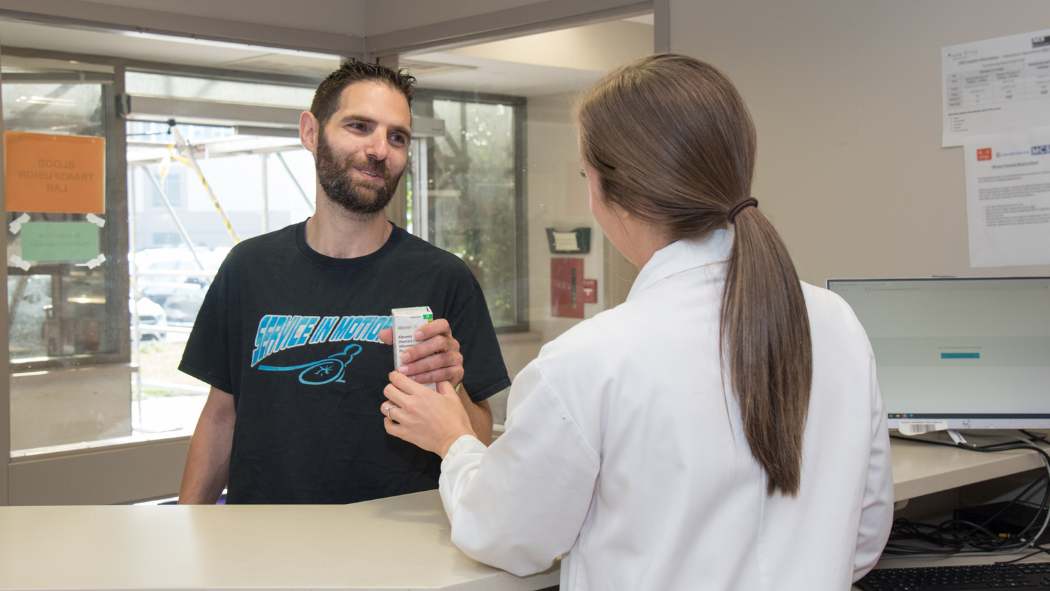
Mike Moussa, a porter, receives an item in the lab area to deliver to another department.
May 23, 2025
Mike Moussa has been a porter at London Health Sciences Centre (LHSC) for eight years. Prior to joining the portering team, Moussa was part of environmental services after having changed careers from working in the banking industry. He is proud of the safe care he and his colleagues provide to patients each day.
Whether he’s making sure he gets patients to the correct appointment or helping deliver machines when and where they’re needed most, Moussa does it with a smile. Making patients feel comfortable is a key part of what he enjoys about his role.
“Patient safety is the most important thing,” he explains. “It’s not just making people feel comfortable, we are making sure we are getting the right patient to the right place, at the right time.”
Members of the portering team, like Moussa, begin their days with checking in and picking up a phone so they can receive dispatches. Throughout the day, they receive calls directing them to various areas around the hospital. “After we get a call, we go into the area, make sure the armband matches up with the patient's name by asking them verbally confirm their name,” explains Moussa. “When it’s a product or piece of medical equipment, it’s a little different, but we still make sure we get the right product to the right place.”
As part of their training, porters participate in the Ticket to Ride program, a procedure implemented at LHSC in 2016 ensuring pertinent information on the patient being transported, and where they are being transported from and to. The tickets that accompany patients from one area to another provide additional information about the patient, including any precautions and hazards, such as cytotoxic medications. These tickets help ensure patient safety by providing a double check for the porters who do not have access to electronic patient files.
Role of porters
In addition to transporting patients, porters also move lifesaving equipment and products around the hospital. With specific training for moving patients and hazardous materials, such as chemotherapy medications, porters provide a specialized service at the hospital.
"We do a lot of behind the scenes work to help make sure everything gets where it needs to be,” says Moussa. "Being porters, we know where everything is and where it needs to go."
Moussa mentions that porters transport a wide variety of items, and it changes daily. Porters also have the benefit of knowing where items can be found. “Some days we'll go to the O.R. and get pieces of a bed and take them to a different unit. If a unit is missing something, you can go to another unit and get it for them,” he says. “They call us, and we can help them with that.”
What is the most rewarding for you?
“I find it really rewarding when I pick up somebody who's scared, lost, or confused, and I can help them by talking with them, and making the experience easy for them,” explains Moussa. Depending on what is being transported, porters may take a few extra minutes to stop and ask if someone needs directions or assistance in getting to a room or appointment.
“You never know what people are going through or where anybody is at, just being there, providing that presence and communication can really help,” says Moussa. “Patient safety is everything.”
Patient Safety at LHSC video:
